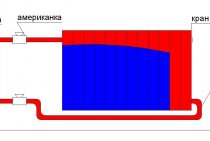Coal mining
Coal mining methods depend on the depth of its occurrence. The development is carried out in an open way in coal mines, if the depth of the coal seam does not exceed one hundred meters. There are also frequent cases when, with an ever-increasing deepening of a coal pit, it is further advantageous to develop a coal deposit by an underground method. Mines are used to extract coal from great depths. The deepest mines in the Russian Federation extract coal from a level of just over one thousand two hundred meters.
In conventional mine production, about 40% of the coal is not extracted. The use of new methods of mining - longwall - allows you to extract more coal.
Along with coal, coal-bearing deposits contain many types of georesources that have consumer significance. These include host rocks as raw materials for the construction industry, groundwater, coal-bed methane, rare and trace elements, including valuable metals and their compounds. For example, some coals are enriched with germanium.
peaked at 8254.9 million tons in 2013.
coal formation
At different times and in different places in the geological past of the Earth, there were dense forests in wetland lowlands. Due to natural processes such as floods, these forests were buried underground. As the layer of soil above them increased, the pressure increased. The temperature also rose as it went down. Under such conditions, the plant material was protected from biodegradation and oxidation. The carbon sequestered by plants in huge peatlands was eventually covered and deeply buried by sediments. Under high pressure and high temperature, dead vegetation is gradually converted into coal. Since charcoal is mostly carbon, the conversion of dead vegetation to charcoal is called carbonization.
Coal is formed when rotting plant material accumulates faster than it can be bacterially decomposed. The ideal environment for this is created in swamps, where stagnant water, poor in oxygen, prevents the vital activity of bacteria and thereby protects the plant mass from complete destruction. At a certain stage of the process, the released acids prevent further bacterial activity. This is how peat - the initial product for the formation of coal. If then it is buried under other sediments, then the peat experiences compression and, losing water and gases, is converted into coal.
Under the pressure of layers of sediments one kilometer thick, a layer of brown coal 4 meters thick is obtained from a 20-meter layer of peat. If the depth of burial of plant material reaches three kilometers, then the same layer of peat will turn into a layer of coal 2 meters thick. At a greater depth, about six kilometers, and at a higher temperature, a 20-meter layer of peat becomes a layer of anthracite 1.5 meters thick.
For the formation of coal, abundant accumulation of plant mass is necessary. In ancient peat bogs, starting from the Devonian period (about 400 million years ago), organic matter accumulated, from which fossil coals were formed without access to oxygen. Most commercial fossil coal deposits date from this period, although younger deposits also exist. The age of the most ancient coals is estimated at about 300-400 million years.
The formation of large volumes of coal most likely ceased after the appearance of fungi, since the white rot of fungi completely decomposes lignin.
The wide, shallow seas of the Carboniferous provided ideal conditions for coal formation, although coals are known from most geological periods.The exception is the coal gap during the Permian-Triassic extinction event, where coal is rare. The coal found in the Precambrian layers that predate land plants is thought to have originated from the remains of algae.
As a result of the movement of the earth's crust, coal seams experienced uplift and folding. Over time, the uplifted parts were destroyed due to erosion or spontaneous combustion, while the lowered ones were preserved in wide shallow basins, where coal is at least 900 meters above the earth's surface. The formation of the thickest coal seams is associated with areas of the earth's surface, on the area of which outflows of significant volumes of bituminous masses occurred, such as, for example, in Hat Creek (English) Russian. (Canada), the total thickness of the package of coal seams reaches 450 m.
Impact on the environment and health of miners
Fossil coal contains harmful heavy metals such as mercury and cadmium (concentration from up to 0.0001 to 0.01% by weight)[source not specified 2077 days].
During underground coal mining, the dust content of the air can exceed the MPC hundreds of times. Under the working conditions that exist in the mines, the continuous wearing of respirators is practically impossible (with each severe pollution they require a quick change to clean new respirator masks, they do not allow communication, etc.), which does not allow using them as a means of reliable prevention of irreversible and incurable occupational diseases - silicosis, pneumoconiosis (etc.). Therefore, in order to reliably protect the health of miners and workers of coal processing enterprises in the United States, more effective means of collective protection are used.
Classification, types
Coal is divided into shiny, semi-shiny, semi-matte, matte. As a rule, shiny types of coal are low-ash due to the low content of mineral impurities.
Among the structures of the organic matter of coal, 4 types are distinguished (telinite, posttelinite, precolinite, and colinite), which are successive stages of a single process of decomposition of lignins - cellulose tissues. To the genetic groups of coal, in addition to these four types, leuptinite coal is additionally included. Each of the five genetic groups according to the type of substance of coal microcomponents is divided into corresponding classes.
There are many types of coal classifications: by material composition, petrographic composition, genetic, chemical-technological, industrial and mixed. Genetic classifications characterize the conditions of coal accumulation, real and petrographic - its material and petrographic composition, chemical-technological - the chemical composition of coal, the processes of formation and industrial processing, industrial - technological grouping of coal types depending on the requirements of the industry. Classifications of coal in seams are used to characterize coal deposits.
Industrial classification of coal
The industrial classification of hard coal in individual countries is based on various parameters of the properties and composition of coal: in the USA, hard coal is classified according to the heat of combustion, the content of fixed carbon and the relative content of volatile substances, in Japan - according to the heat of combustion, the so-called fuel coefficients and the strength of cokes, or inability to coke. In the USSR, the so-called Donetsk classification developed in the year by V.S. Krym acted as the main industrial classification. It is sometimes called "branded", and at the same time it is genetic, since the changes in the properties of coal taken as its basis reflect their connection with the genetic development of the organic matter of coal.
deposits
| The country | Coal | Brown coal | Total | % |
|---|---|---|---|---|
| USA | 111 338 | 135 305 | 246 643 | 27,1 |
| Russia | 49 088 | 107 922 | 157 010 | 17,3 |
| China | 62 200 | 52 300 | 114 500 | 12,6 |
| India | 90 085 | 2360 | 92 445 | 10,2 |
| Australia | 38 600 | 39 900 | 78 500 | 8,6 |
| South Africa | 48 750 | 48 750 | 5,4 | |
| Ukraine | 16 274 | 17 879 | 34 153 | 3,8 |
| Kazakhstan | 28 151 | 3128 | 31 279 | 3,4 |
| Poland | 14 000 | 14 000 | 1,5 | |
| Brazil | 10 113 | 10 113 | 1,1 | |
| Germany | 183 | 6556 | 6739 | 0,7 |
| Colombia | 6230 | 381 | 6611 | 0,7 |
| Canada | 3471 | 3107 | 6578 | 0,7 |
| Czech | 2094 | 3458 | 5552 | 0,6 |
| Indonesia | 740 | 4228 | 4968 | 0,5 |
| Turkey | 278 | 3908 | 4186 | 0,5 |
| Madagascar | 198 | 3159 | 3357 | 0,4 |
| Pakistan | 3050 | 3050 | 0,3 | |
| Bulgaria | 4 | 2183 | 2187 | 0,2 |
| Thailand | 1354 | 1354 | 0,1 | |
| North Korea | 300 | 300 | 600 | 0,1 |
| New Zealand | 33 | 538 | 571 | 0,1 |
| Spain | 200 | 330 | 530 | 0,1 |
| Zimbabwe | 502 | 502 | 0,1 | |
| Romania | 22 | 472 | 494 | 0,1 |
| Venezuela | 479 | 479 | 0,1 | |
| Total | 478 771 | 430 293 | 909 064 | 100,0 |
Hard coal is concentrated in the Donetsk coal basin and in the Lvov-Volyn coal basin (Ukraine); Karaganda (Kazakhstan); South Yakutsk, Minusinsk, Bureinsky, Tunguska, Lensky, Taymyrsky (Russia); Appalachian, Pennsylvanian (North America), Lower Rhine-Westphalian (Ruhr - Germany); Upper Silesian, Ostrava-Karvinsky (Czech Republic and Poland); Shanxi basin (China), South Welsh basin (Great Britain).
Among the largest coal basins, the industrial development of which began in the 18th-19th centuries, Central England, South Wales, Scotland and Newcastle (Great Britain) are singled out; Westphalian (Ruhr) and Saarbrücken basins (Germany); deposits of Belgium and Northern France; basins of Saint-Etienne (France); Silesia (Poland); Donetsk basin (Ukraine).
Education
Coal is formed from the decomposition products of the organic remains of plants that have undergone changes (metamorphism) under conditions of high pressure of the surrounding rocks of the earth's crust and relatively high temperatures.
When the coal-bearing stratum is immersed to a depth under conditions of increasing pressure and temperature, a consistent transformation of the organic mass occurs, a change in its chemical composition, physical properties and molecular structure. All these transformations are referred to as "regional coal metamorphism". At the final (highest) stage of metamorphism, coal turns into anthracite with a pronounced crystal structure of graphite. In addition to regional metamorphism, sometimes (less often) transformations take place under the influence of heat from igneous rocks located next to coal-bearing strata (overlying or underlying them) - thermal metamorphism, as well as directly in coal seams - contact metamorphism. An increase in the degree of metamorphism in the organic matter of coal is traced by a consistent increase in the relative content of carbon and a decrease in the content of oxygen and hydrogen. The yield of volatile substances consistently decreases (from 50 to 8% in terms of dry ash-free state), the heat of combustion, the ability to sinter and the physical properties of coal also change. In particular, gloss, reflectivity, bulk density of coal and other properties change linearly. Other important physical properties (porosity, density, caking, heat of combustion, elastic properties, etc.) change according to pronounced parabolic or mixed laws.
As an optical criterion for the stage of coal metamorphism, the reflectivity index is used; it is also used in petroleum geology to establish the stage of catagenic transformations of the sedimentary strata. The reflectivity in oil immersion (R0) consistently increases from 0.5–0.65% for grade D coal to 2–2.5% for grade T coal.
The density and porosity of coal depend on the petrographic composition, the amount and nature of mineral impurities, and the degree of metamorphism. The components of the fusinite group are characterized by the highest density (1300–1500 kg/m³), and the lowest (1280–1300 kg/m³) by the vitrinite group. The change in density with an increase in the degree of metamorphism occurs in a parabolic law with an inversion in the zone of transition to the fatty group; in low-ash manifestations, it decreases from coal grade D to grade Zh on average from 1370 to 1280 kg/m³ and then sequentially increases for coal grade T up to 1340 kg/m³.
The total porosity of coal also changes according to extreme laws; for Donetsk grade D coal it is 14–22%, grade K coal 4–8% and increases (probably due to loosening) up to 10–15% for grade T coal.Pores in coal are divided into macropores (average diameter 500×10–10 m) and micropores (5–15×10–10 m). The gap is occupied by mesopores. Porosity decreases with increasing stage of metamorphism. Endogenous (developed during the formation of coal) fracturing, which is estimated by the number of cracks for every 5 cm of shiny coal, depends on the stage of coal metamorphism: it increases to 12 cracks during the transition of brown coal to long-flame coal and has a maximum of 35–60 for coking coal and successively decreases to 12–15 cracks in the transition to anthracites. Subordinate to the same pattern of change in the elastic properties of coal are Young's modulus, Poisson's ratio, shear (shear) modulus, and ultrasound velocity. The mechanical strength of hard coal is characterized by its crushability, brittleness and hardness, as well as temporary compressive strength.
Usage
Hard coal is used as a technological, energy-technological and energy raw material, in the production of coke and semi-coke in connection with the production of a large number of chemical products from them (naphthalene, phenol, pitch, etc.), on the basis of which fertilizers, plastics, synthetic fibers, varnishes, paints and so on.
One of the most promising areas for the use of coal is liquefaction (hydrogenation of coal) to produce liquid fuel. There are various schemes for the non-energy use of hard coal based on thermochemical, chemical and other processing with the aim of their full integrated use and ensuring environmental protection.


